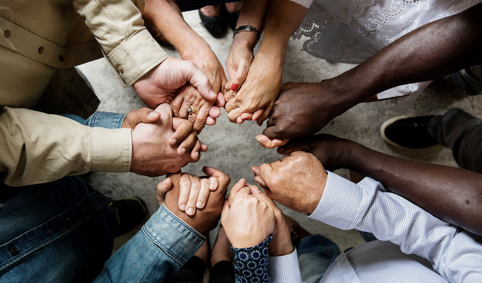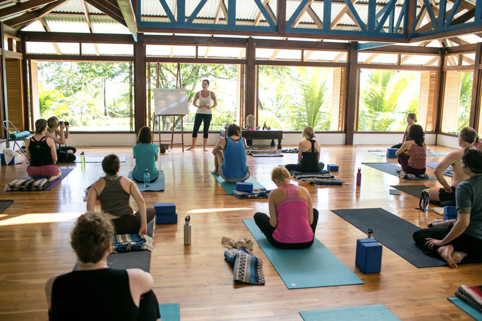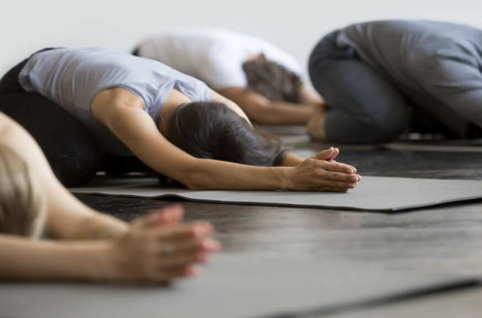There’s More to Yoga than Down Dog…
We live in a fast-paced, globalized world. With this, ancient practices have become watered-down and modernized to suit our outward-looking lives. For many, yoga has simply become another way to better inhabit our bodies. But, yoga goes so much further than the physical realm. Yoga also offers a framework, and a set of ethics to lead a better life for ourselves and the world at large.
The point of yoga is to create a whole, spiritual self. To not separate our lives into spiritual and non-spiritual. This is achieved through the four paths of yoga; Raja, Bhakti, Jnana, and Karma Yoga. But what are the four paths of yoga?
- Raja yoga is mind and body control. This is what most of us experience in our contemporary asana and meditation practices.
- Bhakti yoga is the worship of the divine, following a path of devotion.
- Jnana yoga is the study of ancient scriptures to gain wisdom.
- Karma yoga is the path of action.
What is Karma Yoga?

Karma yoga is about learning to act selflessly – not expecting reward or gain.
For example; Ronnie goes to his local community center where they are serving lunch to older people without families. If he does this expecting to be compensated – through payment or some kind of return favor – he would not be following a karmic path. He is looking for some kind of gain for his work. If instead, Ronnie helps to serve lunch purely to help others without expecting anything in return and from the goodness of his own heart, then he is following the karmic path.
Through the action of karma yoga, we get to experience selfless service, compassion, and kindness – all without any expectation or anticipation of reward. In our capitalist world, this is a hard thing to get our head around, we are programmed to ‘do’ for ‘reward.’ It’s a dog-eat-dog world!
The ancient Hindu philosophy, Vedanta, says that when we act with reward in mind, we forget that we are more than our physical selves. We become obsessed with being somebody through fame, wealth, or achievement. We lose a sense of being part of a collective, a community. When we follow the karmic path, we purify ourselves, learning to step outside of our ego towards the path of enlightenment. We see that we are part of something greater than ourselves, and see where we can work for the greater good.
Think about it… When was the last time you did something purely for someone else? What kind of world would we live in if we all decided to act more selflessly?!?!?!
Yoga Teacher Training – Serve Your Community

Karma yoga doesn’t need to be complicated or involve hardship. You could serve those around you by spreading what you love; yoga. Learning to become a yoga teacher is a great way to tread the karmic path and serve our communities.
Humanity needs yoga more than ever – many people lead over-stimulated, chronically stressed lives. More people die than ever because of stress-related illnesses. How we are living is not serving us! This world needs people who are willing to serve others and show people the benefits of living this way. Go! Share your passion, and feel the beauty of offering your services selflessly and treading the karmic path!
There are many ways you could teach karmically:
- You could offer free classes for people who can’t afford to pay for yoga (yoga can be expensive!).
- Hold a fund-raising class – offer the monies to a local charity or community in need.
- Got to a local old people’s home and teach some chair yoga!
- Teach yoga to children at a school.
How amazing would it be to train to do something that you love, and then share this passion with others?!?!
Blue Osa Teaching Training

Blue Osahas been running hugely successful teacher training for ten years. All teacher trainings are immersion-style, meaning that your one responsibility is to be open to learning and self-discovery! A chance to get away from your everyday routine and create profound transformation!
Yogi Aaron is an internationally renowned teacher and leads the training at Blue Osa. He knows that immersive style teacher training provides the best conditions to accelerate learningand give teachers the confidence they need to teach yoga.
Imagine learning and gaining the confidence to teach a yoga class. Learning about alignment and how to effectively adjust someone. Studying ancients texts like the Bhavgaha Gita. Learning how to practice and teach asanas, pranayamas, kriyas, chanting, mantra, and meditation. Then taking this and helping those in need.Taking your knowledge and spreading it to your tribe and your community! This is living life with purpose! This is living the karmic path.
So what is stopping you? Find out more about Blue Osa’s teacher training and reserve your spot NOW!








